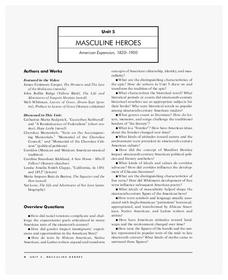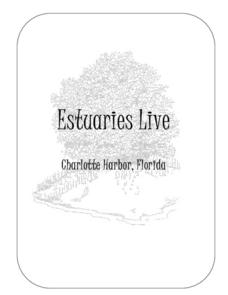Curated OER
The Tongue Untied: A Guide to Grammar, Punctuation, and Style
Is/are? Who/that? Young grammarians must select the correct form of the verb to agree with the subject in a series of sentences. The resource can be used for as an in-class activity or as homework for extra practice.
Curated OER
Colors of Our World
Young learners determine the answers to 11 clues that can be answered with color vocabulary words. They fill in the crossword puzzle using the clues provided!
Curated OER
Future Perfect Tense with Negatives
Do your young grammarians need extra practice using the correct form of verbs in the future perfect tense with negatives? A 10 sentence worksheet will reveal whether or not they have mastered this verb sequence. No answer sheet is included.
Curated OER
Plants are yummy!
Is it a fruit or a vegetable? Youngsters place an F next to each fruit they see and a V next to the vegetables. Corn is tricky. It is a grass, so it's actually not a fruit or a vegetable, but a grain!
Curated OER
Using Insects in the Classroom
Students identify and interpret the importance and diversity of the insect world. Students organize various insects into a classification system based on their characteristics. Students create tree or window ornaments utilizing their...
K12 Reader
Why Do We Need Pronouns?
Who needs pronouns? Everyone! Show your class the power of pronouns with this worksheet. Learners read a sample paragraph that doesn't include any pronouns and then revise that paragraph by filling in the appropriate pronouns.
Annenberg Foundation
Masculine Heroes
What were the driving forces behind American expansion in the nineteenth century, and what were its effects? Scholars watch a video, read biographies, engage in discussion, write journals and poetry, draw, and create a multimedia...
Kenan Fellows
Sustainability: Learning for a Lifetime – Soil
Do great gardeners really have green thumbs—or just really great soil? Environmental scholars discover what makes Earth's soil and soil quality so important through research and experimentation. Learners also develop an understanding of...
Curated OER
Prairie Project
Students complete a long-term research project on prairie grasses and forbs. They develop research questions, collect and analyze data from reconstructed prairie plots, and publish their research data on a Prairie website.
Curated OER
Estuaries Live Charlotte Harbor, Florida
Students reorganize sentence strips into paragraphs to learn about seagrasses. They learn vocabulary and facts about sea grasses using the paragraphs once they are reconstructed. They continue their study with a number of associated...
Curated OER
Specific Heat and Insulation - Temperature Changes
Students expand their knowledge of how temperature changes between air and soil. They also examine how natural grass cover insulates the effects of the sun's direct radiation.
Curated OER
Potato Head
Students create a potato looking object. In this art lesson, students decorate hamster bedding with a face making it look like the potato. Students water the object causing the grass to grow making it look like hair.
Curated OER
Newton's Cows
In this secondary mathematics worksheet, students solve a problem attributed to Sir Isaac Newton in which they determine the number of cows that will eat all the grass on six acres of land in six weeks. The one page worksheet...
Curated OER
Graze Like a Cow
Students explore how a cow digests the grass they eat. In this science/math lesson, students compare the quality of forage. Additionally, students determine the effects of rangeland health on the production.
Curated OER
Erosion by the Wind
Fifth graders simulate wind driven soil erosion by using paper confetti to demonstrate the movement of the soil. They write about three examples of soil erosion found in their community.
Curated OER
Ecological Succession in Pond Water Cultures
Students collect samples of pond water, dried grass, and soil in a jar. They predict the order of ecological succession in their pond water cultures. They compare their expected results with their observed results.
Curated OER
Now You Have It, Now You Don't
Students compare shipping peanuts made from corn and made from Styrofoam. In this corn based peanuts lesson, students understand why to use eco-friendly materials for packing. Students participate in an experiment to compare the...
Curated OER
Feeling the Heat
Students investigate the urban heat island effect. In this urban heat island effect lesson, students learn how trees, grass, asphalt, and other things on the school grounds effect temperature. They use the information to generalize it to...
Curated OER
Egg to Butterfly
Students examine the life cycle of the butterfly through literature. In this butterfly life cycle lesson, students listen to a read aloud of Eric Carle's, The Very Hungry Caterpillar, and discuss the life cycle shown in the story. They...
Curated OER
Swimming With the Crabs!
In this environmental science worksheet, students complete a graphic organizer (Frayer model) on blue crabs. They write an article using the given facts.
Curated OER
A Fun Alternate Way to Teach Children Keyboarding1
Students use mnemonics rather than mindless repetition to help them remember keyboard locations. They examine the left side home row, backspace key, and space bar using large, teacher-made keyboard.
Curated OER
Case of the Missing Pumpkin
Students explore the process of decomposition in plants. In this plant biology lesson, students use a cleaned out pumpkin and observe how the decomposition process takes place. Students write down adjectives to describe the pumpkin.
Curated OER
Plant a Seed of Kindness
Students perform acts of kindness. In this character lesson, students cut out seed shapes and write down their acts of kindness on them. Students place the seeds on a bulletin board where they "plant" them below the grass line.
Curated OER
Dark Days on the Prairie
Learners explore U.S. geography by researching agriculture. In this dust bowl lesson plan, students complete a cause and effect worksheet based upon the dust bowls that covered a large portion of Oklahoma and Texas in the early 1900's....























